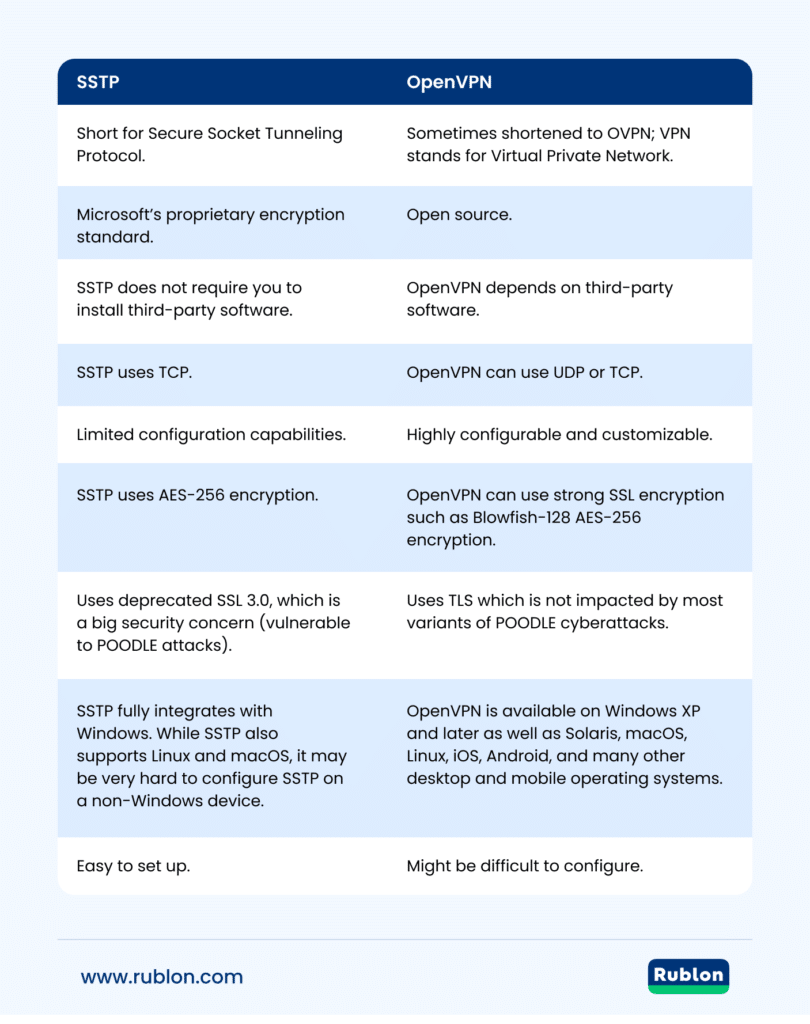Last updated on March 19, 2025
Start Free Trial
No Credit Card Required
SSTP vs. OpenVPN: Key Differences and Best Use Cases
Key Differences
Best Use Cases
What is SSTP?
How Does SSTP Work?
- PPP is a protocol that establishes a link between two devices and allows them to exchange data.
- HTTPS is a protocol that secures web traffic using SSL/TLS encryption.

What is OpenVPN?
Don’t Let a Single Password Be Your Weak Link!
Just one compromised VPN password allowed hackers to cripple Colonial Pipeline. Don’t let your organization be the next victim. Start your free Rublon MFA trial today and protect your critical infrastructure with robust multi-factor authentication!
How Does OpenVPN Work?
- TLS is a protocol that secures web traffic using certificates and keys.
What is a POODLE Attack?
What’s the Difference Between SSTP and OpenVPN?

Advantages of OpenVPN over SSTP
- OpenVPN uses TLS instead of SSL, which makes it not susceptible to POODLE attacks.
- OpenVPN can run over UDP, which makes it faster.
- OpenVPN is highly customizable, which allows more flexibility and the use of very secure encryption algorithms such as AES-256.
- OpenVPN is open source, which means it is regularly inspected, maintained, and updated by its community of supporters.
- OpenVPN works on every platform, whereas SSTP may have compatibility issues with non-Windows devices.
Advantages of SSTP over OpenVPN
- SSTP is more stable and easier to set up on Windows devices, as it is a proprietary protocol developed by Microsoft.
- SSTP uses TCP port 443 by default, which is the same port used by HTTPS traffic. This makes it harder to detect and block by firewalls and censorship tools.
SSTP vs. OpenVPN: Vulnerabilities to Cyberattacks
SSTP Vulnerabilities
OpenVPN Vulnerabilities
Mitigation Strategies
Exploring Other VPN Protocols: WireGuard and IKEv2
WireGuard
OpenVPN vs. WireGuard: What’s the Difference? →
IKEv2
IKEv2 vs. OpenVPN: What’s the Difference? →